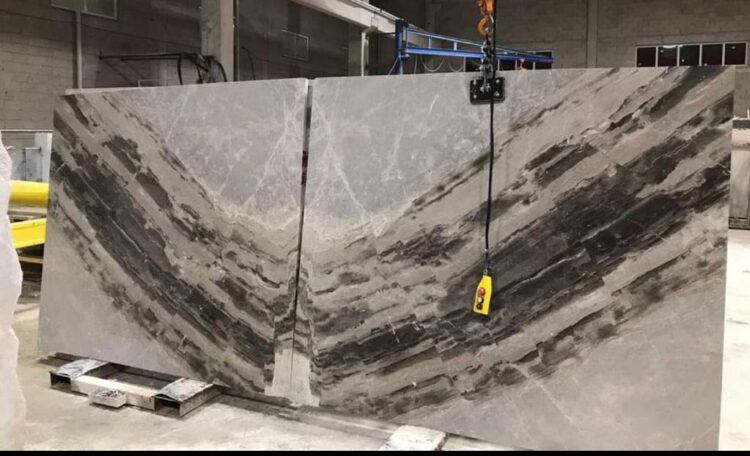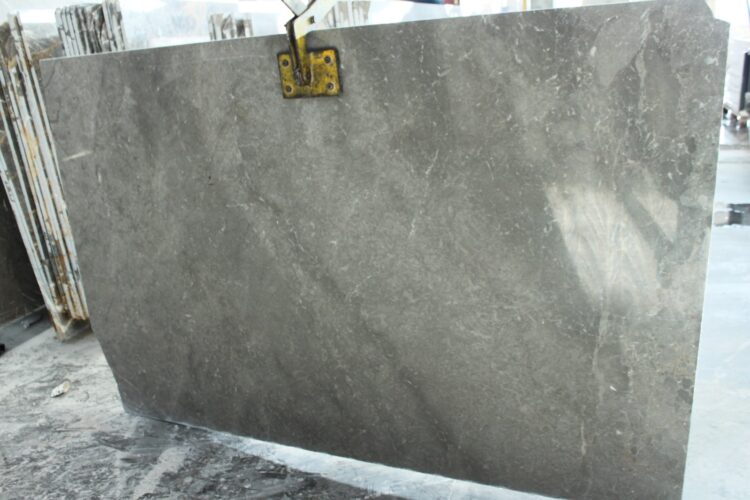Yeşim Kozanlı, who has more than 25 years of experience in architecture and interior architecture, talked about the importance of using natural stone and marble in her projects, the selection criteria and their effects on the design process. In our interview with Kozanlı, we discussed the value natural stones add to architecture and marble’s diversity and flexibility. In this interview, you will find inspiring information about the designer’s personal journey and architectural practices.
Can you tell us about the process of establishing your architecture and Interior Design Company?
I graduated from Bilkent University, Interior Architecture and Environmental Design Department, which I started in 1994. It was also the beginning of my professional journey. Even during my university years, I started working, and from the moment I graduated, I started my own design office with a small team. Our early projects were mainly on offices and residences; however, we have evolved towards more complex and challenging projects such as hotel design and have become experts in this field.
Today, we serve as Yeşim Kozanlı Architecture & Interior Design and are accredited to many prestigious hotel brands globally. As a team, we work with an average of 100 people in the office and the field. The complexity and difficulty of working with a group of this size are easy to understand, but this adds significantly to the richness and versatility of our design process. In each project, team members from different disciplines come together and add many different perspectives and talents, increasing the depth and diversity of our solutions. And this is our greatest strength. Both in my journey and in the evolution of our company, our goal has always been to sustain quality and innovation in architecture and interior design.
What does natural stone mean to you? How do you use this material in architecture?
Natural stones and materials are structural elements that we often prefer and especially emphasize in our projects. The spontaneous aesthetic value of these organic materials adds a friendly and warm atmosphere to the project. These features make them an essential element in the design process. In a wide range of architectural applications, the use of natural stone varies on a project basis, depending on its nature, geographical location and design language. Having a versatile structure, this material offers the opportunity to create different surfaces and space solutions, thus leaving a unique mark on every project. Like all other materials, the locality is vital in selecting a natural stone. The fact that the stone is specific to the region adds a more authentic and meaningful value to the project.
What are the reasons why you prefer marble in architecture? What are the advantages of this material for you, and what are the benefits of marble over other materials?
The main reason behind the preference for marble is the unique variety of textures and patterns offered by each species and region. This variety offers unlimited creative possibilities in interior design. For example, we can use some marble types like a work of art with special cutting techniques. This creates an aesthetically impressive appearance and raises the overall quality of the interior. Physically feeling the natural texture of marble adds a different richness and sophistication to the interior. This natural material’s unique texture helps any space gain an atmosphere of luxury and quality. So, thanks to marble’s variety and flexibility, every design tells a story and makes every area unforgettable.
How do you choose the marbles you use in your projects? Is there a type of marble that has a special place for you or that impresses you? How do users’ expectations drive your choices?
By offering a wide variety and flexibility, marble can adapt to its usage areas to a great extent. For example, I often prefer marble types with water-absorbing properties in spa designs. These marbles stand out with their resistance to water vapour and moisture, thus helping the space to create a natural and durable atmosphere.
In floor designs, it is possible to present an impressive aesthetic using marble’s natural and striking patterns. This application is an important reason for preference, especially in our hotel projects. However, to ensure safety, we implement various technical solutions to make marble floors non-slip, which is one of the technical challenges in our hotel designs. In addition, with specific processes applied to the surface of the marble, we can obtain various surface textures and colours. In this way, we can create different atmospheres. Recently, I have been particularly interested in marble types such as Amazon Green and Rainforest, which stand out for their natural colours. These marbles add a natural and luxurious touch to spaces.
How do you think using marble in architecture has changed over time? What can you say about the place of marble in the history of architecture?
The use of marble in architecture has an ancient and rich history. In ancient Greek and Roman times, grand monuments, temples and public buildings were built of marble. At that time, marble’s durability and ease of processing made it an indispensable material. Since ancient times, marble has come to symbolize luxury and enduring beauty.
With industrialization in the 1st century, the use of marble decreased a little and more economical, fast, and workable materials were preferred. However, marble was always remembered and continues to be used, especially in prestigious buildings and interiors. Today, thanks to developing technology and design techniques, the use of marble is experiencing a revival. It has become faster and more economical to cut, shape and place marble. New cutting and polishing techniques have allowed marble to be used to achieve different surfaces and textures. These innovations have made marble popular in modern and contemporary architectural projects. But although the use of marble has changed, what it symbolized has remained the same: durability, permanence, and elegant beauty. Thanks to these features, marble remains a prominent material in historical and modern architectural projects.
Can you share the name and features of one of the hotel projects you have realized abroad? For what purpose and how did you use marble in this project?
In our Swissotel Prague project, we used it in many parts of an 11 11-12-meter atrium, creating a pattern combining 5-6 marbles, completely like artwork. At the same time, we have determined marble as one of the basic materials, referring to the region’s natural stone richness and historical texture.
What do you think about the sustainability of marble? What do you know about the environmental effects of marble?
Marble’s sustainability and environmental impacts have been at the centre of discussions in the architecture and construction industries lately. First, a significant amount of energy is consumed, and carbon dioxide is emitted during the extraction and processing of marble. This is among the factors affecting climate change and global warming. In addition, marble quarries often result in the destruction or damage of natural habitats. On the other hand, the durability and longevity of marble can make it a sustainable option. When cared for properly, marble structures can stand for hundreds of years. This creates less waste compared to other building materials that need replacing or maintaining the material.
On the sustainability of marble, there are much research and effort in the sector on developing sustainable extraction and processing methods, promoting recycling and minimizing waste. In conclusion, while giving a general idea about the environmental effects of marble, it is necessary to emphasize the importance of being conscious of sustainability in selecting and using the material. Sustainable marble extraction and use are essential to environmentally friendly construction and design practices.
What stones have caught your attention lately? What do you think about new trends? Which stones would you like to see in architectural designs?
In recent years, the focus has been on the various surface treatments of these stones rather than natural stones. This means that stones can create multiple textures and effects, thus offering a more comprehensive range of applications. For example, scratched, acid-washed or flame-burned stones are among the most notable trends lately. These processes give different textures to the surface of the stones and give them a more modern or rustic look. Especially travertine is one of the favourite materials of recent years. This material has been used since ancient Rome and adds an authentic touch to spaces with its natural look and warm tones. In addition, green marble (for example, Guatemalan Green or Amazonian Green) is also gaining popularity. Green marble offers a rich and striking colour palette, thus making a solid aesthetic statement in interiors.
Similarly, the reinvention and popularization of Terrazzo is an intriguing trend. Terrazzo is a material created by combining different pieces of stone, grinding and polishing. This material is used in bulk floors, countertops, and wall coverings. When we look at the new trends, we can see that natural stones add a different dimension to architectural and interior designs, not only with their diversity but also with the way they are processed and used. I look forward to seeing more of these innovative and creative design approaches.


























 +90 532 585 51 95
+90 532 585 51 95 +90 532 585 51 95
+90 532 585 51 95